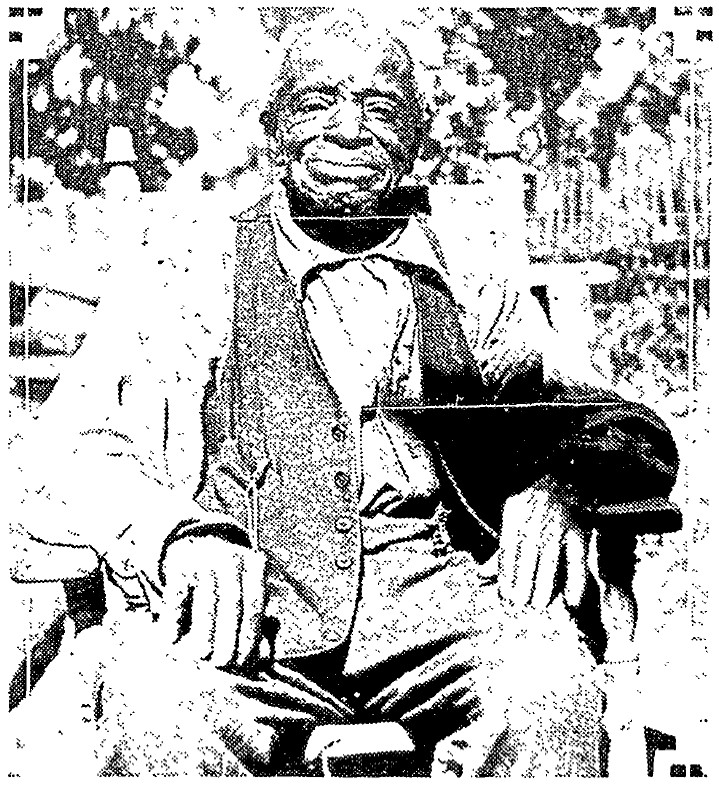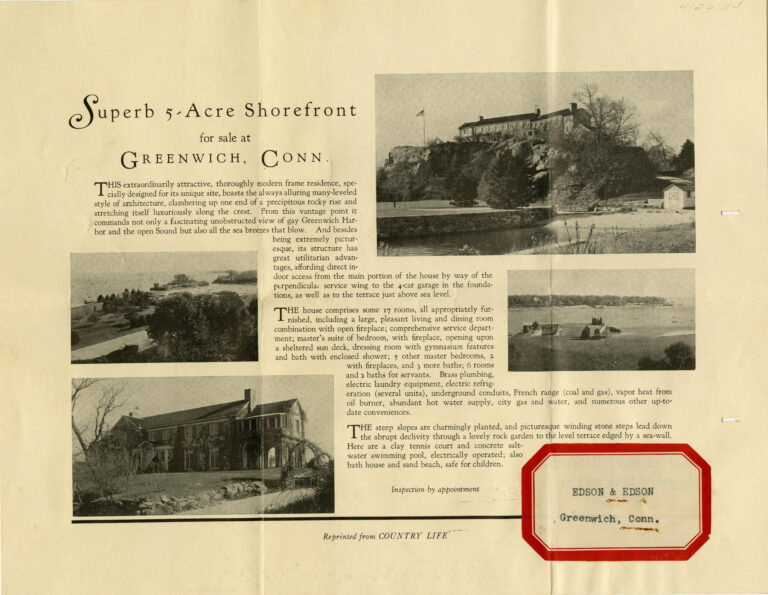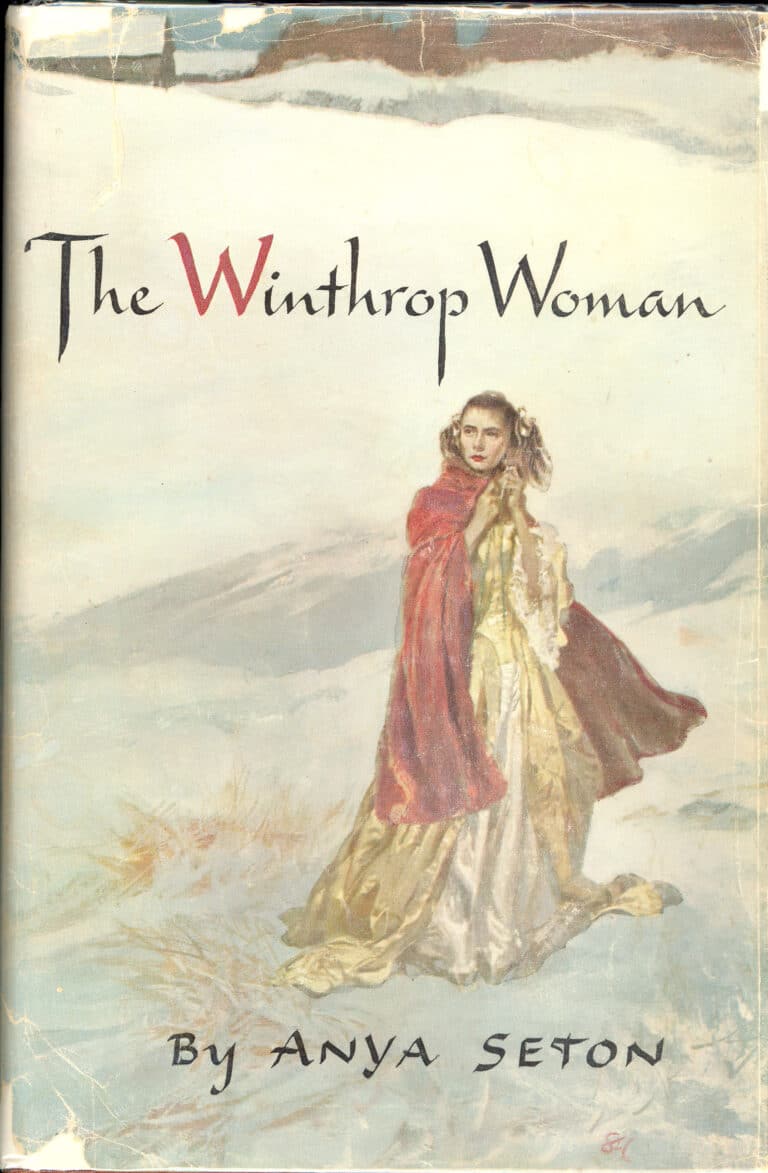What do our last names tell us about ourselves?
What can we learn about who we are and where our ancestors came from by our last names?
In the first article of my mini-series, “What’s in a Name?”, we looked at the history and meaning of first names. In this article, we’re going to look at last names.
There are five basic categories of last names: Parental, Occupational, Locational, Nickname, and Decorative:
Parental
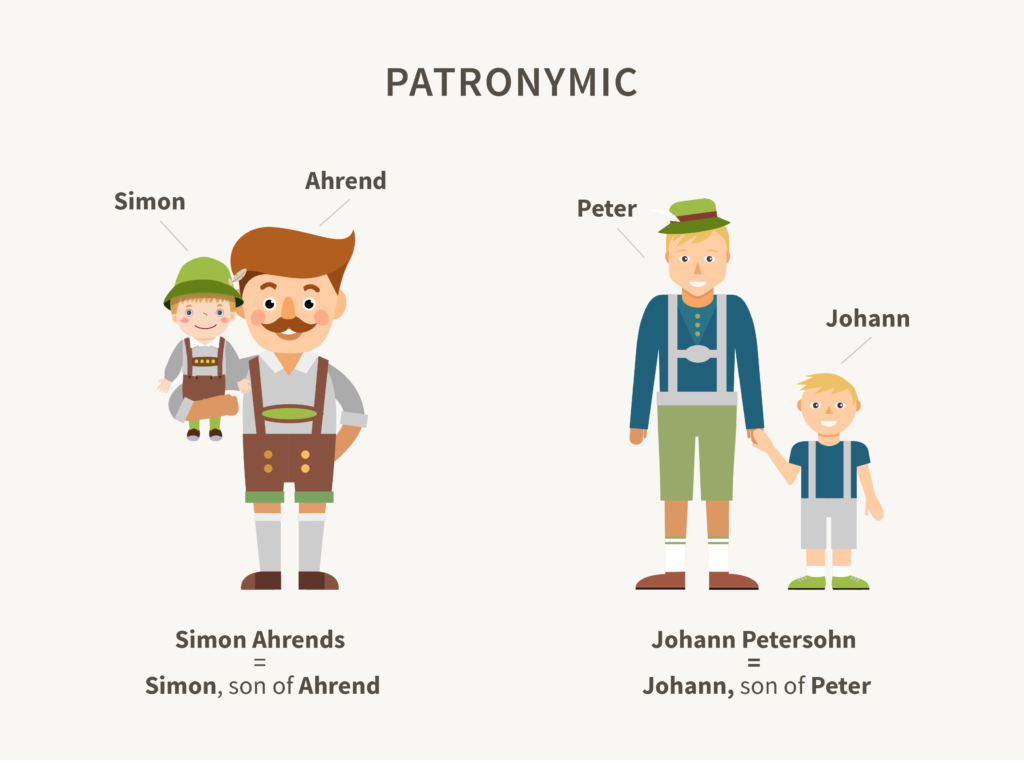
The academic terms for this type of last names are patronymic and matronymic. A patronymic name comes from a father’s first name; matronymic, a mother’s first name. Parental last names are the most common type found in the world.
Consider these last names: Williams and Beaton. If someone with one of these names traces its origin back through history, they might find — in the generation before the first use of Williams or Beaton as a last name — a father whose first name was William or a mother whose first name was Beaton.
Similarly, there are names with the word “son” or “daughter” added to one of the parents’ names. The most common example of this is Ericson.
“Who is this boy?”
“Oh, he’s Leif, Eric’s son”.
It’s easy to see how these names came to be!
The prefixes D-, Di-, Fitz-, and Mac– and the suffixes –ez, –ich, –ov, and –sen mean “son of.” The suffixes –dottir, –ia, and –ya mean “daughter of.” The O– at the beginning of many Irish last names and the –i at the end of many Persian names mean “descendant of.”
Examples: Fitzpatrick, Hansen, Lopez, D’Angelo, Heinrich, Dimitrov, Jensen, MacRae, O’Reilly, Sigurðardóttir
Occupational
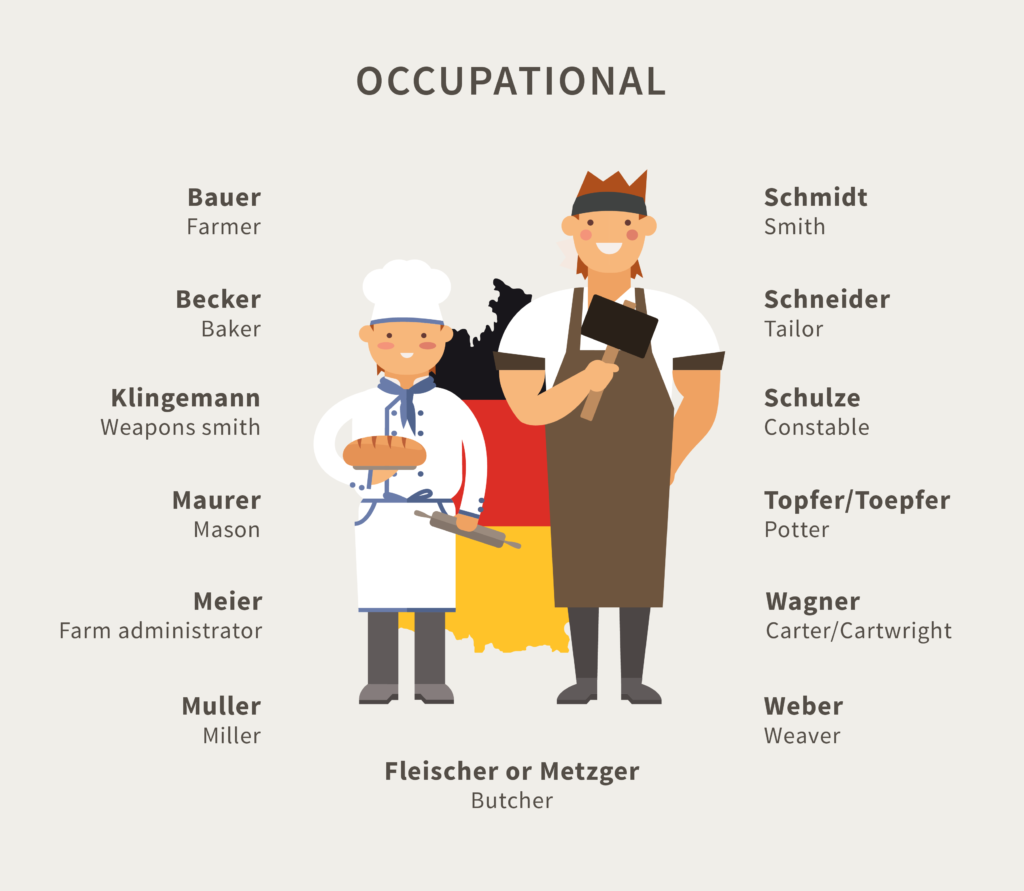
Occupational names are the second most common type of last name. They tell you what job an ancestor had. For example, my last name is Lodge because an ancestor of mine ran a lodge in the 1500s.
A few English examples are: Smith, Mason, Clark, Fletcher, Gardener, Hunt, Fuller, Page, Parker, Sawyer, Turner, Walker, and Judge.
Other examples from around the world are Muller (miller), Barros (gatekeeper), Popa (priest), Bakkar (baker), Cohen (priest), Haddad (blacksmith), Terzic (tailor), Papoutsis (shoemaker), and Lakatos (locksmith).
Sometimes, names of colors, such as Green, Black, or Blue, are the occupational names of people who made that color dye or ink.
Locational

Locational last names indicate where your ancestors lived. For example, the Italian geographical last name Greco means “Greek” and suggests that an ancestor lived in Greece.
Some indicate that your ancestors lived in a particular town, city, or region. Examples are the Chinese surname Wei, after the ancient Chinese state of Wei, and the Italian surname Sorrentino, after the Italian city of Sorrento.
Far more common than those two examples are last names based on geographical features, such as the English surnames Moore, Woods, Hill, and Fields. There are thousands of examples worldwide, including Steiner (rock), Berger (mountain), Horak (highlands), Saarinen (island), Van Dyk (dike), Dahl (valley), Monteiro (hill), Yamamoto (mountain), Kobayashi (small forest), Lin (forest), and Tian (heaven). Most Japanese last names are in this category.
Nicknames
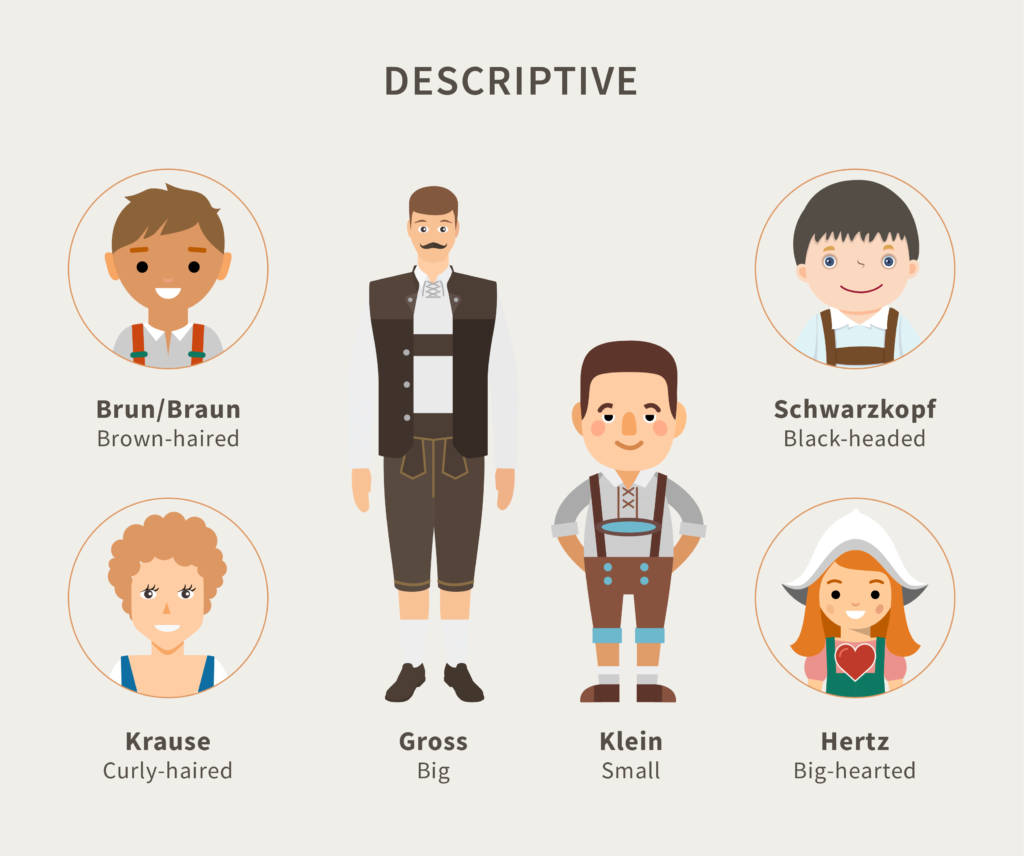
Some last names were once someone’s nickname.
Many last names in the Nickname category describe a person’s physical appearance, as do the English nicknames Little and Long. In China, the last name Gao is the Chinese word for “tall.”
Hair color is another physical characteristic commonly referred to in these names. Fairchild and Rubio describe an ancestor with blonde hair. Brown, Braun, Moretti, and Moreno describe someone with brown hair (or tan skin}. Red, Rudenko, Rosca, and Rosii describe a red-headed ancestor. Rizzi and Kučerová both mean “curly-haired.”
There are also last names that describe personality. Noble, merry, peaceful, majestic, young, free, tough, intelligent, and beautiful are descriptions that have been reflected in last names in many different cultures and languages. Etienam, Bonnet, and Goodfellow are a few of my favorite names in this category, as they all generally mean “a good person.”
Decorative
Last names of this type do not tell you where your ancestors lived or what they did, but they do reveal a certain “poetry of the soul.” I think there is a sweetness in looking at a name that tells me, “This was something that meant a lot to my ancestor.” Most of the time, these names are of plants or animals.
Decorative names, such as Rose or Wolf (and their foreign language equivalents), are rare in Western European cultures. However, in Italy, Latvia, Poland, Portugal, Russia, and Turkey, decorative names are popular. Some examples of Decorative names are Gallo (rooster), Leone (lion), Bērziņš (birch tree), Ozols (oak tree), Wiśniewski (cherry tree), Pereira (pear tree), Oliveira (olive tree), Morozov (frost), Solovyov (nightingale), and Aslan (lion).
Decorative names are somewhat more common in Asia, such as the Korean names Kim (gold) and Ok (jade), the Japanese names Chibana (a thousand blossoms) and Sakurai (well of the cherry blossom), and the Chinese names Li/Lee (plum), Ye (leaf), and Lu (musical note).
Today’s Activity
Part 1: Your Name
- What does your last name mean?
- What category does it fall into?
- How about your friends’ names?
Part 2: America’s Names
In the worksheet below, you will find the 100 most common last names in the United States.
Can you sort them into the five categories?
Which category has the most?

